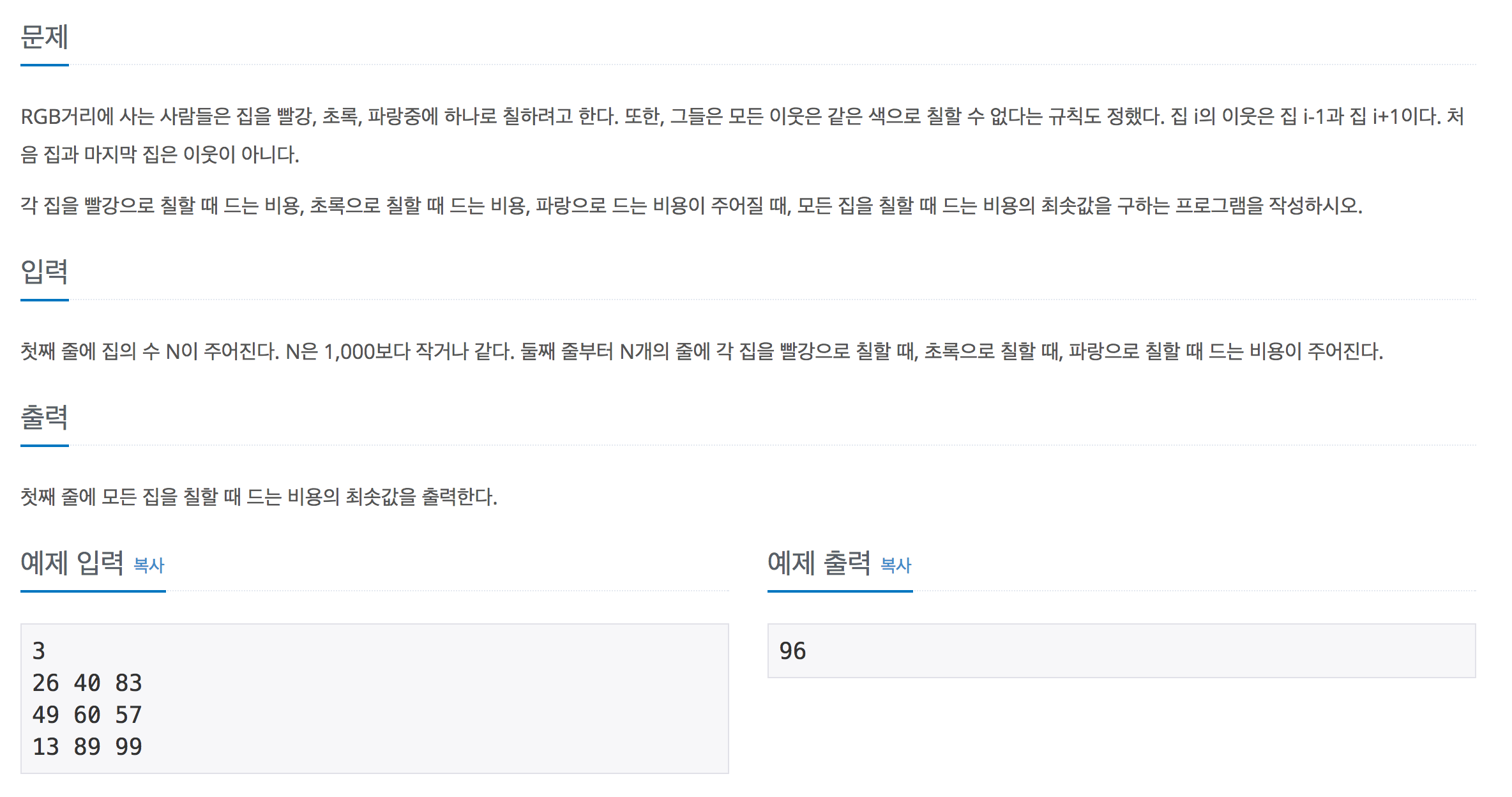
이 문제의 접근 방식은, 먼저 모든 경우의 수를 다 구해서 최소 값을 구하게 한 다음,
중복 연산하는 부분을 DP를 이용해 제거했다.
#include <iostream>
using namespace std;
int cost[3][1001]; //input
int d[3][1001] = {0,}; //memorize
int N;
int getMinCost(int color_index,int home_index)
{
if(home_index >= N)
return 0;
if(d[color_index][home_index] != 0)
return d[color_index][home_index];
int m = -1;
for(int i=0;i<3;i++)
if(i != color_index)
{
if( m == -1 )
m = cost[color_index][home_index] + getMinCost(i, home_index + 1);
else
m = min(m, cost[color_index][home_index] + getMinCost(i, home_index + 1));
}
d[color_index][home_index] = m;
return m;
}
int main()
{
cin>>N;
for(int i=0;i<N;i++)
cin>>cost[0][i]>>cost[1][i]>>cost[2][i];
int m = -1;
for(int i=0;i<3;i++)
if(m == -1)
m = getMinCost(i, 0);
else
m = min(m, getMinCost(i, 0));
cout<<m<<endl;
return 0;
}
정답 처리는 되었지만, DP를 사용하지 않고 깔끔한 방법이 있었다.
#include <stdio.h>
#include <algorithm>
using namespace std;
int main(void) {
int n, r, g, b, x, y, z;;
scanf("%d", &n);
while(n--){
scanf("%d %d %d", &r, &g, &b);
r += min(y, z);
g += min(x, z);
b += min(x, y);
x = r, y = g, z = b;
}
int m = min(x, y);
printf("%d", min(m, z));
}